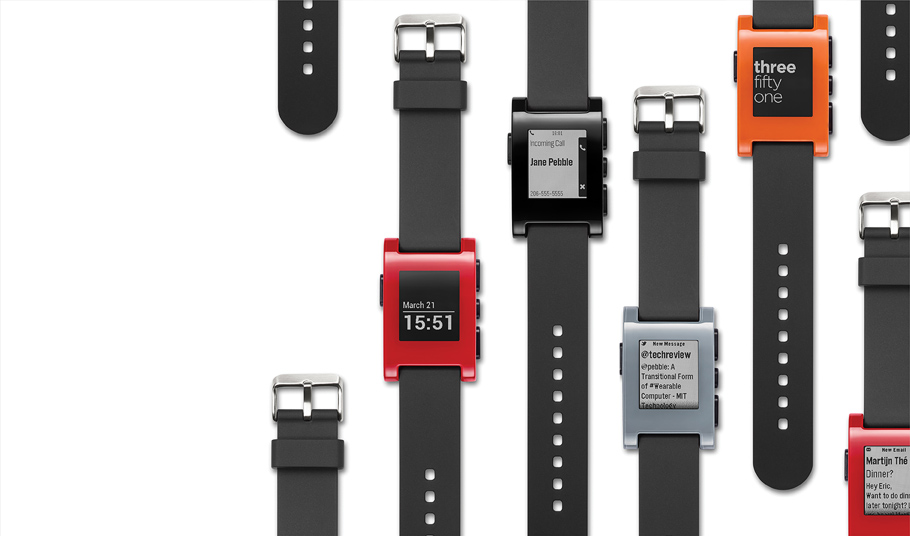

Connectivity
Smart Watches
The designers of the Pebble watch realized that a mobile phone is more useful if you don’t have to take it out of your pocket.

Eric Migicovsky didn’t really want a “wearable computer.” When he first conceived of what would become the Pebble smart watch five years ago, as an industrial-design student at Delft University of Technology in the Netherlands, he just wanted a way to use his smartphone without crashing his bicycle. “I thought of creating a watch that could grab information from my phone,” the 26-year-old Canadian says. “I ended up building a prototype in my dorm room.”
Now Migicovsky is shipping 85,000 Pebble watches to eager customers who don’t want to lug a glass slab out of their pocket just to check their e-mail or the weather forecast. Pebble uses Bluetooth to connect wirelessly to an iPhone or Android phone and displays notifications, messages, and other simple data of the user’s choosing on its small black-and-white LCD screen. In April 2012, using the online fund-raising platform Kickstarter, Migicovsky asked for $100,000 to help bring Pebble to market. Five weeks later, he had more than $10 million—making his the highest-grossing Kickstarter campaign yet. Suddenly smart watches are a real product category: Sony entered the market last year, Samsung is about to, and Apple seems likely to follow.
Although the $150 Pebble watch can be used to control a music playlist or run simple apps like RunKeeper, a cloud-based fitness tracker, Migicovsky and his team purposely designed the watch to do as little as possible, leaving more complicated apps for phones. This emphasis on making the watch “glanceable” informed nearly every aspect of the design. The black-and-white screen, for example, can be read in direct sunlight and displays content persistently without needing to “sleep” to conserve battery power, as color or touch-screen displays do.
These watches are coming to market a few months before Google Glass, which is another attempt to solve the problem Pebble addresses—namely, that “interacting with our phones has a certain overhead that doesn’t need to be there,” says Mark Rolston, chief creative officer of Frog Design. But Google Glass will try to replace the smartphone altogether by combining a computer and monitor into eyeglass frames so that wearers can “augment” their view of the world with data. That lines up with predictions about the advent of wearable computing, but it’s easy to see Pebble’s idea being much more popular. By making use of a watch—a classic accessory—Pebble is trying to fit in to long-standing social norms rather than create new ones.
Advertisement